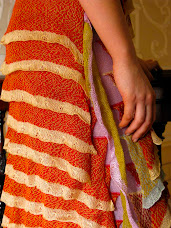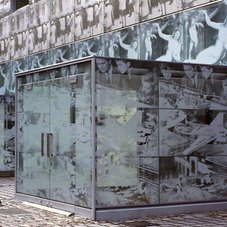 Reflected Farmhouse, left, designed by Peter Gluck illustrates the expense of minimalism, primarily because craftsmanship is visible and must be perfect. Using natural materials for ornament, pioneered by Adolf Loos and Frank Lloyd Wright, are often expensive, too. Gluck is so attentive to the production of his work and concerned with quality control, that he formed his own construction firm. Does this entirely answer why should less be more expensive? As consumers begin to exert greater control over production possibly quality, durability, design excellence, and low maintenance products will gain greater market share, although touring any new suburb, ecomodista despairs the current status of mass housing design. Perhaps Lot-ek's prefab container modules will prove popular (http://www.lot-ek.com/). Container Home Kits are available.
Reflected Farmhouse, left, designed by Peter Gluck illustrates the expense of minimalism, primarily because craftsmanship is visible and must be perfect. Using natural materials for ornament, pioneered by Adolf Loos and Frank Lloyd Wright, are often expensive, too. Gluck is so attentive to the production of his work and concerned with quality control, that he formed his own construction firm. Does this entirely answer why should less be more expensive? As consumers begin to exert greater control over production possibly quality, durability, design excellence, and low maintenance products will gain greater market share, although touring any new suburb, ecomodista despairs the current status of mass housing design. Perhaps Lot-ek's prefab container modules will prove popular (http://www.lot-ek.com/). Container Home Kits are available.See also http://www.trendwatching.com/briefing/ for their monthly briefings, especially Crowd Clout.
Another issue posed by minimalism is storage. For an interior to appear minimal, yet work, storage must either be built into the walls and modules, or eliminated by minimal consumption, possible for only the most austere consumer. Adolf Loos' Müller Villa is one of the earliest examples of built in furniture and storage. Amazingly, when photographed by ecomodista, the silk upholstered built-in couch was still intact, although threadbare. Threadbare is definitely preferable to replacement of the upholstery.







